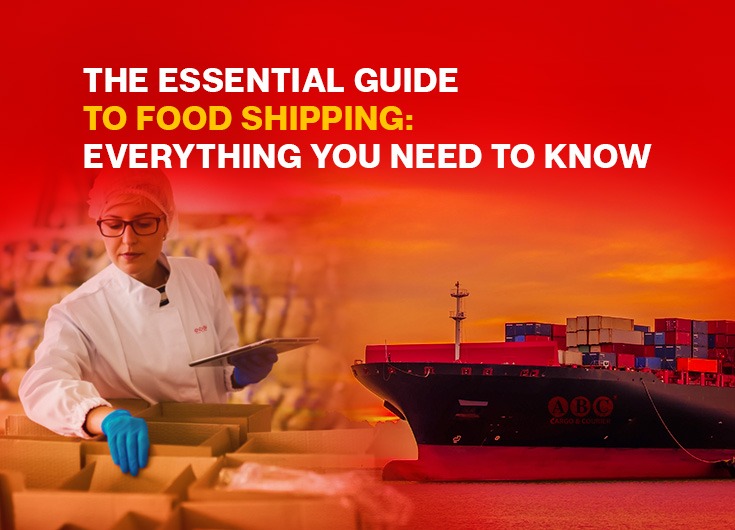Are you a dry foods online shopping fanatic or an avid food lover with a burning passion for sharing your delectable creations beyond your local community? Ever wondered what types of food you can send online or the essential factors to consider while shipping perishable items?
Perhaps you’re curious about the materials needed to ensure your food arrives fresh and irresistible.
Nevermind! Whether you’re a culinary enthusiast looking to share your mouthwatering creations or a small food business eager to expand your reach, this blog is here to assist you. We’ll delve into the realm of food cargo in UAE, answering your searing questions about what types of food can be sent via cargo to India and the factors to consider when shipping perishable items in Dubai cargo. Besides, we’ll explore the essential materials that guarantee your food arrives at its destination fresh, enticing, and ready to be savored. Get ready to unlock the secrets of successful food shipping in Dubai.
Let’s dive in and make your delectable creations travel far and wide!
What types of food products can be sent via cargo?
When it comes to sending food products via a cargo shipping company in Dubai, there is a wide range of options available. E-commerce and logistics advancements have made it possible to ship both non-perishable and perishable food items through cargo shipping companies in Dubai whether or not they provide door-to-door cargo service. Perishable foods, like fresh meats, seafood, dairy products, fruits, vegetables, bakery items, and prepared meals, have a limited shelf life and require temperature control during shipping. Non-perishable foods, such as canned goods, dry goods (like pasta and grains), snacks, beverages, and condiments, have a longer shelf life and can be safely shipped at room temperature.
How to categorize food items for optimal packaging and shipping during transit?
Packing food for shipping, is commonly categorized into four distinct categories based on the nature and requirements of the items. These categories help determine the appropriate packaging materials, handling procedures, and shipping methods to ensure the safe and secure transportation of food products.
- Frozen Food: These items, such as frozen fruits, vegetables, meals, and seafood, require extremely low temperatures to maintain their quality and prevent spoilage during shipping.
- Cold Food: Perishable items like fresh meats, dairy products, deli meats, and certain bakery items need refrigeration to preserve their freshness and have a limited shelf life.
- Cooked Food: Prepared meals, cooked dishes, and ready-to-eat food products, including gourmet meals, soups, sauces, and desserts, should be carefully packaged and sealed for shipping while maintaining their freshness.
- Dry Food: Non-perishable items with longer shelf lives, including pasta, rice, canned goods, dried fruits, nuts, snacks, and spices, do not require refrigeration or special handling during shipping through leading dry cargo.
What are the factors to consider while shipping food items?
- Food Safety: Maintaining the freshness and quality of food products is crucial. Proper refrigeration, insulation, and temperature control are essential to prevent spoilage and ensure that the products arrive in optimal condition.
- Packaging: Designing packaging that is both visually appealing and practical is important. Customizable packaging can help showcase your brand while choosing suitable materials is vital to preserve the quality and freshness of the food items during transit.
- Shipment Schedule: Due to the perishable nature of food items, careful planning of the shipment schedule is necessary. Consider the time it takes for the items to reach the destination and how long they will remain fresh after arrival. Prompt delivery helps maintain customer satisfaction and prevents food wastage.
- Shipping Services: Selecting the right shipping services is also a requirement. Express shipping is ideal for perishable items, but it may be costly. Batch shipping and standard ground shipping can be more cost-effective for non-perishable food items. Consider the offerings of different carriers to find the most suitable option.
- Shipping Costs: Shipping costs can significantly impact the profitability of online food sales. Factors such as package dimensions, weight, destination, delivery times, and additional cooling agents should be considered when calculating shipping costs. Offering free shipping or finding a balance between cost and customer expectations is essential.
When is the ideal time to ship perishable food items?
The short shelf life of perishable items requires proactive planning to ensure the products reach their destination in a timely manner while maintaining their freshness.
Two key time-related variables should be taken into account. First, consider the duration it takes for the items to reach the destination. This includes factors such as shipping time, transit time, and any potential delays that may occur during the delivery process.
Equally important is assessing how long the food will remain fresh after it arrives at its destination. This consideration ensures that the products maintain their quality and meet customer expectations upon delivery. Delivering food items on time not only contributes to customer satisfaction but also builds better relationships and loyalty toward your brand.
What are the key materials required for successful food shipping?
- Shipping box: Choose a corrugated fiberboard box for perishable and cold products or a cardboard box for dry food items. Ensure the box size is appropriate to accommodate the products and leave space for fillers.
- Cushioning materials: Use materials like crumpled paper, bubble wrap or bubble wrap alternatives, biodegradable packing peanuts, mushroom packaging, styrofoam sheets, or air pillows to provide cushioning and insulation. These materials protect the products and keep them secure during transit.
- Coolants and refrigerants: Include coolants and refrigerants to maintain the temperature of temperature-sensitive products. Dry ice is effective for frozen food items but requires careful handling. Cold packs or gel packs are ideal for shipping cold items and can last for 24 to 36 hours.
In conclusion, shipping food products can be a significant investment for small and medium-sized businesses. However, taking the time to understand the proper packaging and shipping techniques is necessary for ensuring the success of your venture. By implementing the strategies outlined in this article, you can minimize the risk of spoilage, maintain product quality, and ultimately maximize profitability. By investing in suitable materials and employing effective shipping strategies, you can confidently offer your products to a wider customer base, expand your business, and increase overall sales. So, take the time to optimize your food shipping process and watch your business thrive in the competitive e-commerce landscape.





